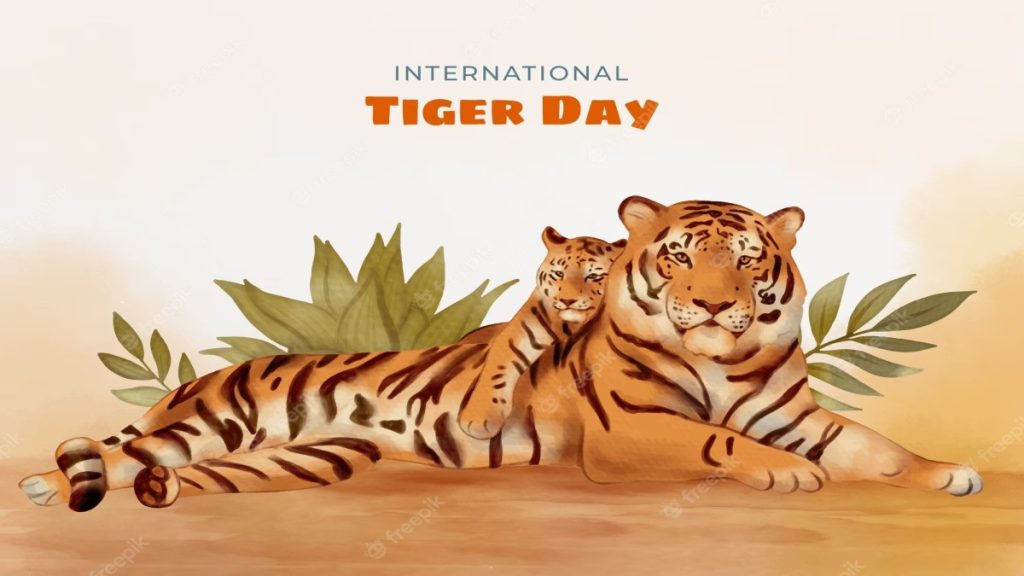Since its beginning on July 29th, 2010 during the Saint Petersburg Tiger Summit, International Tiger Day has been celebrated yearly on this day of every year. Today is a chance to talk about the plight of tigers and how their numbers in the wild have plummeted to the point of extinction by spreading the word. It has been 13 years since the first International Tiger Day was held to raise awareness about the need of protecting tigers and their habitats in order to ensure a harmonious society for both species.
History of This Day
Since just around 3,000 wild tigers exist, International Tiger Day was first observed in 2010 when it was discovered that 97% of all tigers had vanished in the previous century. According to World Wildlife Fund (WWF), several nations, including India, Russia, and China, made commitments to safeguard tigers during the historic Saint Petersburg Tiger Summit in Russia. International institutions such as the Smithsonian Institution and the International Fund for Animal Welfare (IFAW) also celebrate International Tiger Day with WWF. Tx2 is a group of 13 nations that are working together to double the tiger population in the wild. Since then, this significant day has been celebrated yearly to increase awareness and funding for the protection of these well-known creatures across the world.
#InternationalTigerDay #GlobalTigerDay #TigerDay #TigerConservation #wildindianews #naturetimes
International Tiger Day | Global Tiger Day | विश्व बाघ दिवस | Tiger Project #viral #india@byadavbjp@moefcc @ntca_india @wii_india @ForestRajasthan @Hemaram_INC @Shikhar_IAS… pic.twitter.com/pAsZoB9oOf— Nature Times ( Wild India News ) (@WildIndiaNews) July 29, 2023
There are still roughly 4,500 tigers in the wild, according to a recent WWF report, but much more must be done to safeguard this species. The tiger population is still in decline in numerous regions, including most of Southeast Asia.
Significance of This Day
The tiger is a symbol of power and strength in many Asian cultures. International Tiger Day is significant because it recognises the cultural value of tigers and provides a platform from which to call for their conservation.
Habitat destruction, poaching, illicit wildlife trafficking, and human-animal conflict are just some of the dangers that tigers face, and International Tiger Day is a worldwide platform to promote awareness about these issues. It stresses the need for tiger conservation to guarantee the species’ continued existence. It piques people’s interest, making them more likely to participate in tiger conservation initiatives.
Wildlife photographer marks International Tiger Day: https://t.co/HxUMCjMHEH#animals #wildlifephotography pic.twitter.com/migOC6kSDO
— talker (@talker_news) July 28, 2023
“Happy International Tiger Day” pic.twitter.com/DWIo7KFWyj
— Dinesh solanki (@Dinesh_news18) July 29, 2023
The day enables conservation groups and governments to provide information on tiger population numbers and conservation activities, which helps assess progress and highlight regions that need more assistance. Today non-governmental organisations, governments, and conservation groups give more attention and emphasise the need of enforcing existing laws more strictly against poaching and the illicit wildlife trade.
Saving tigers and their habitats also save a wide variety of other species and helps preserve ecosystem diversity.

